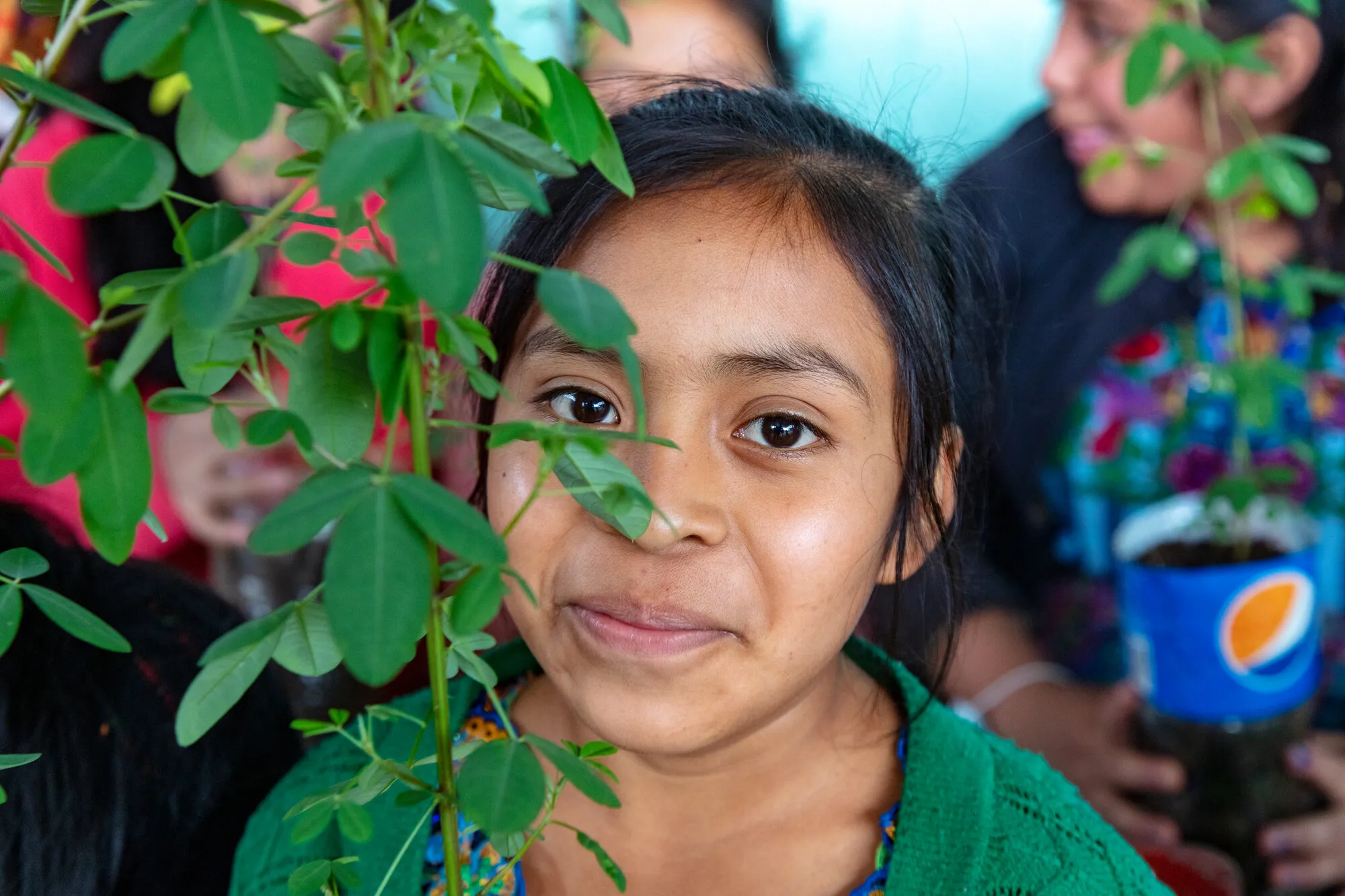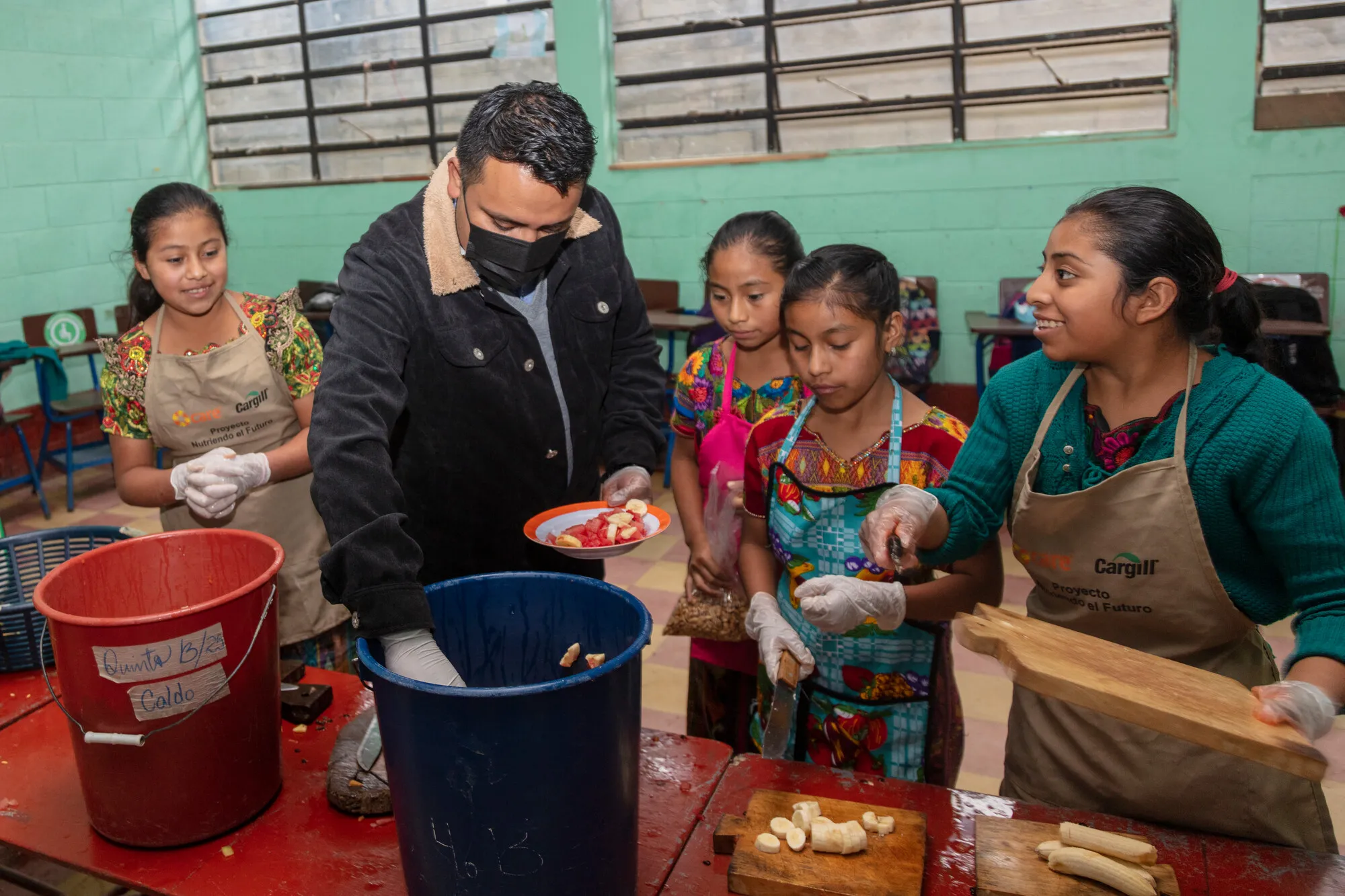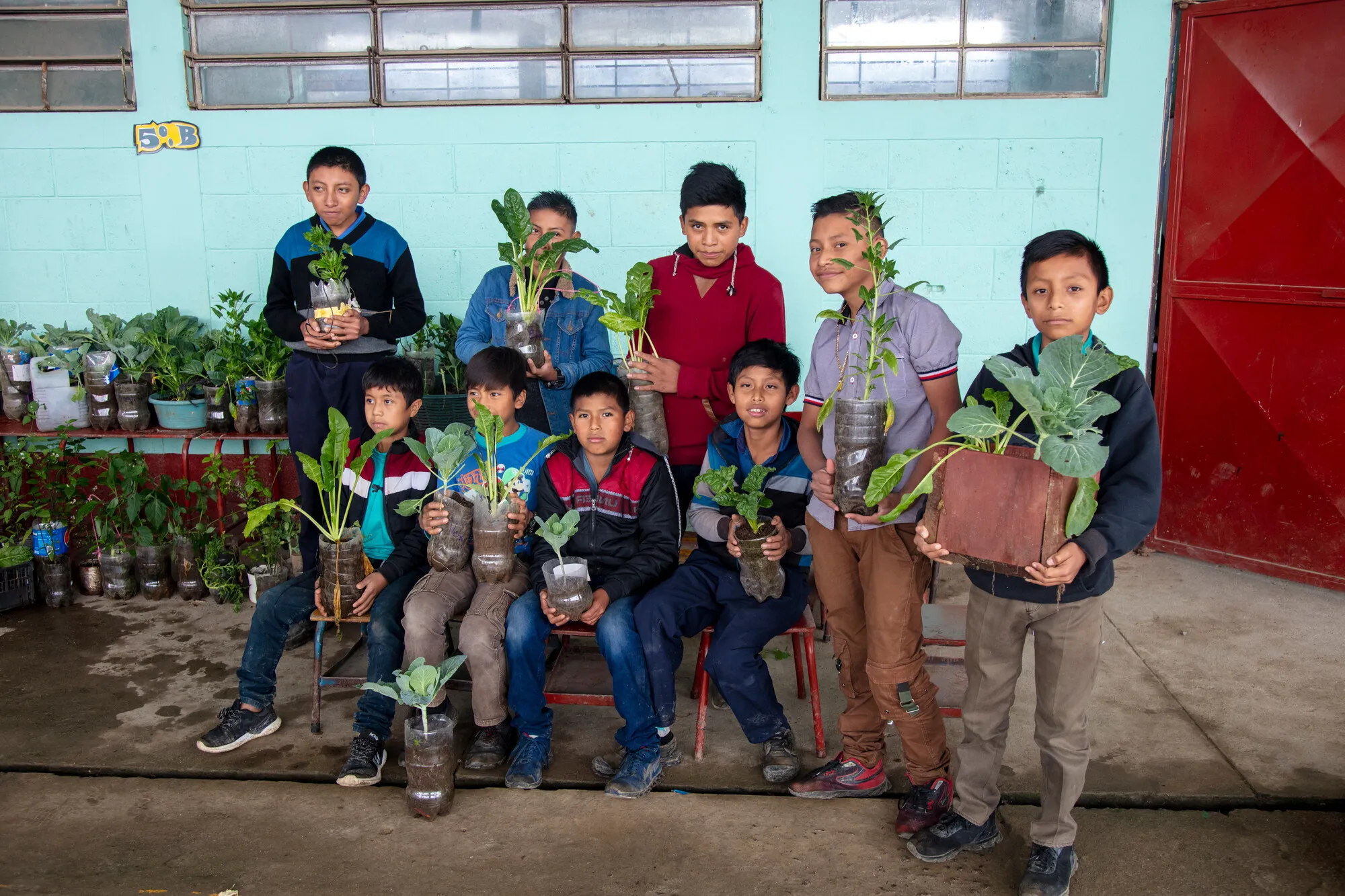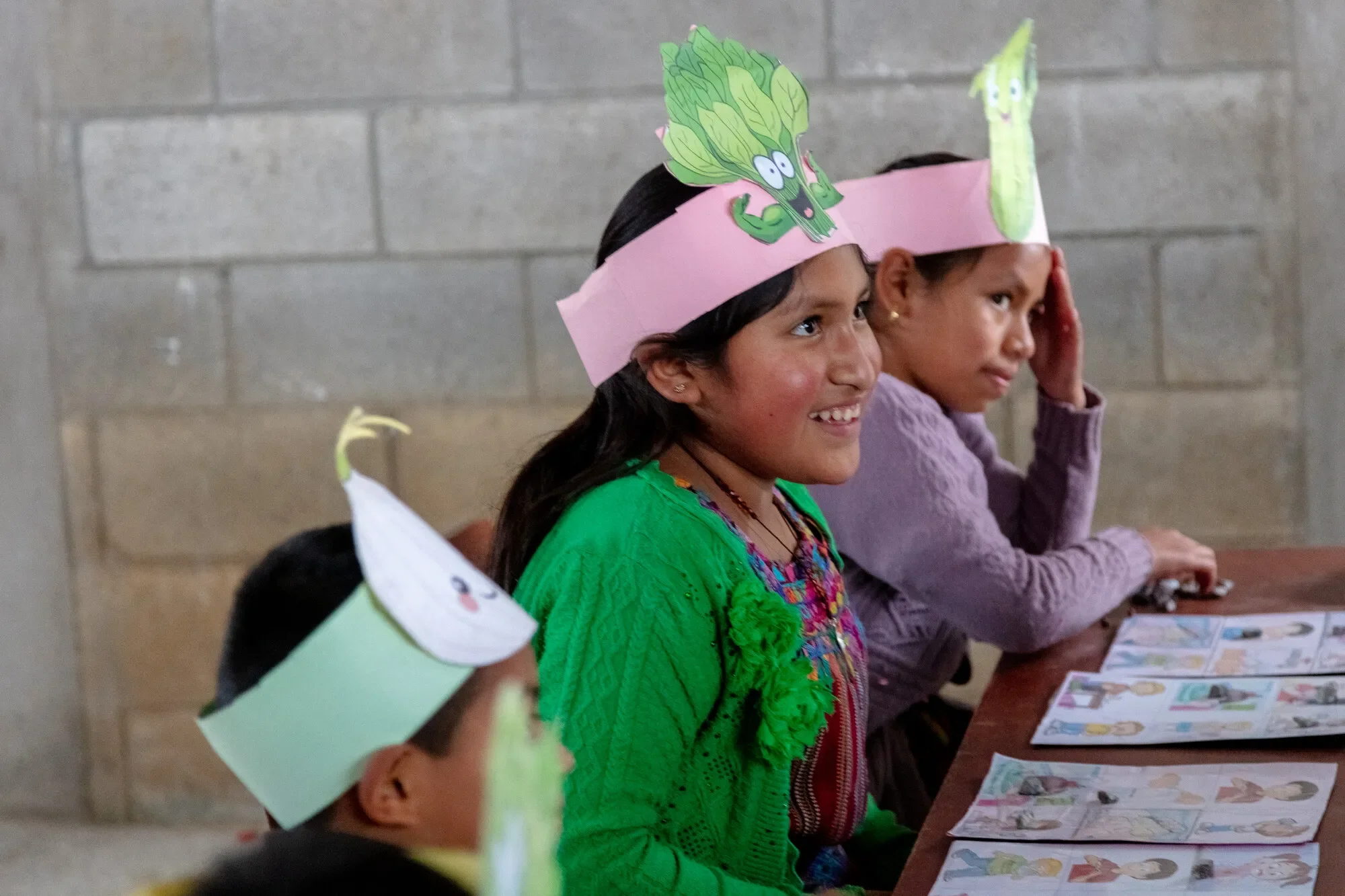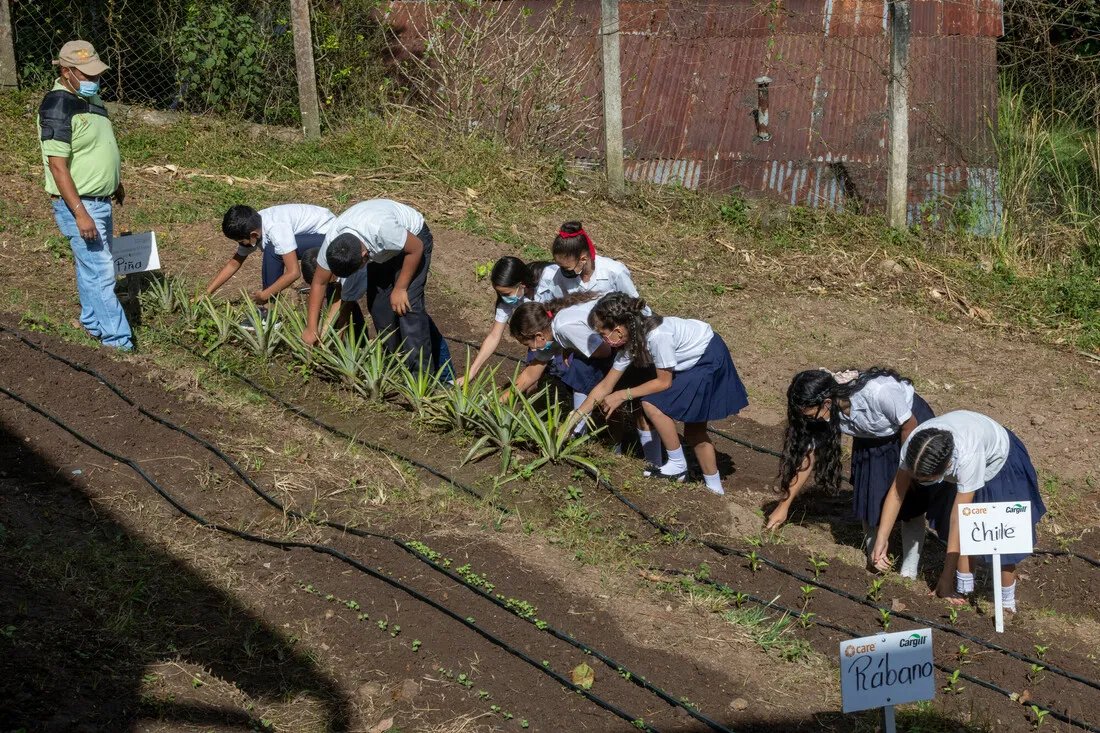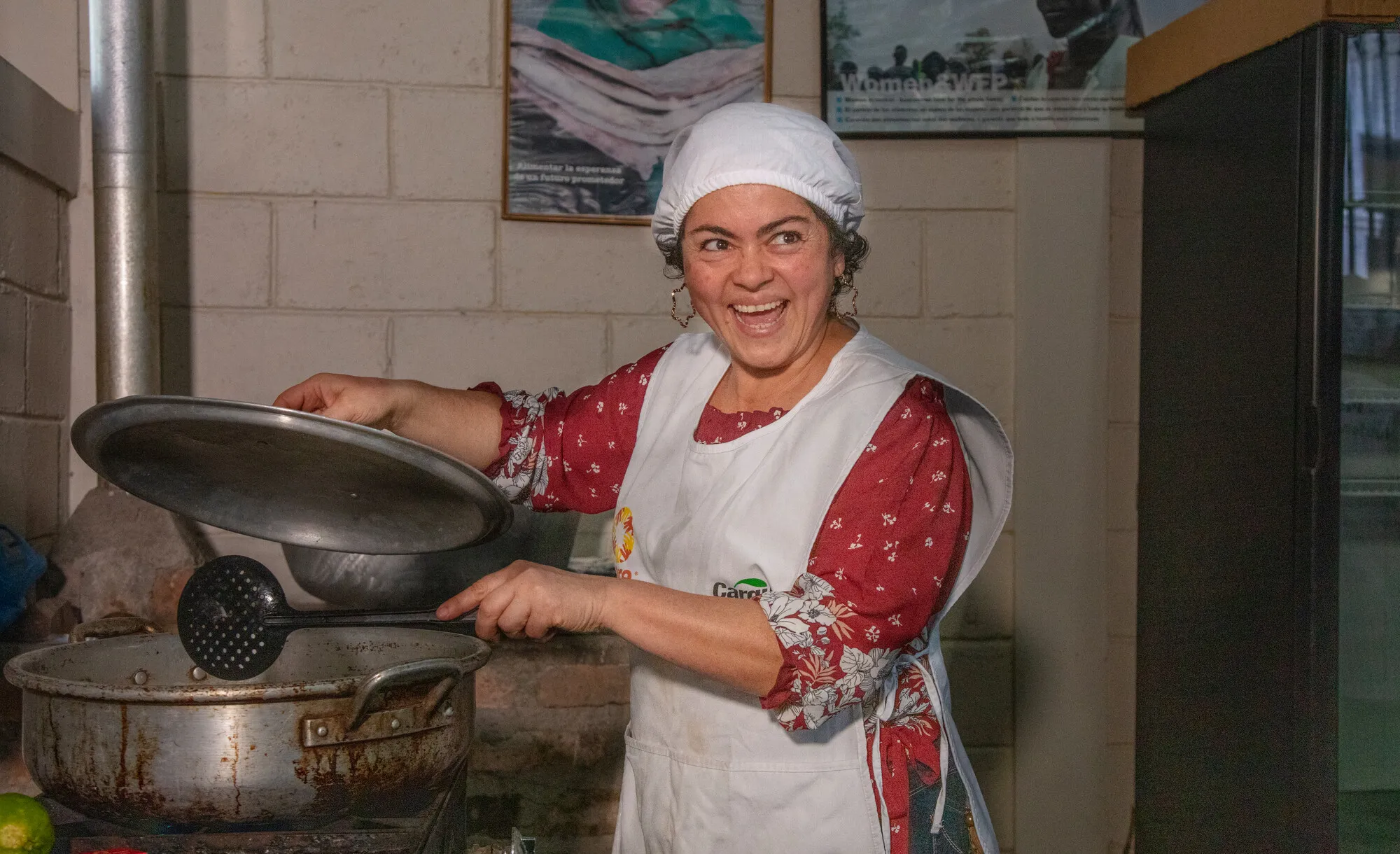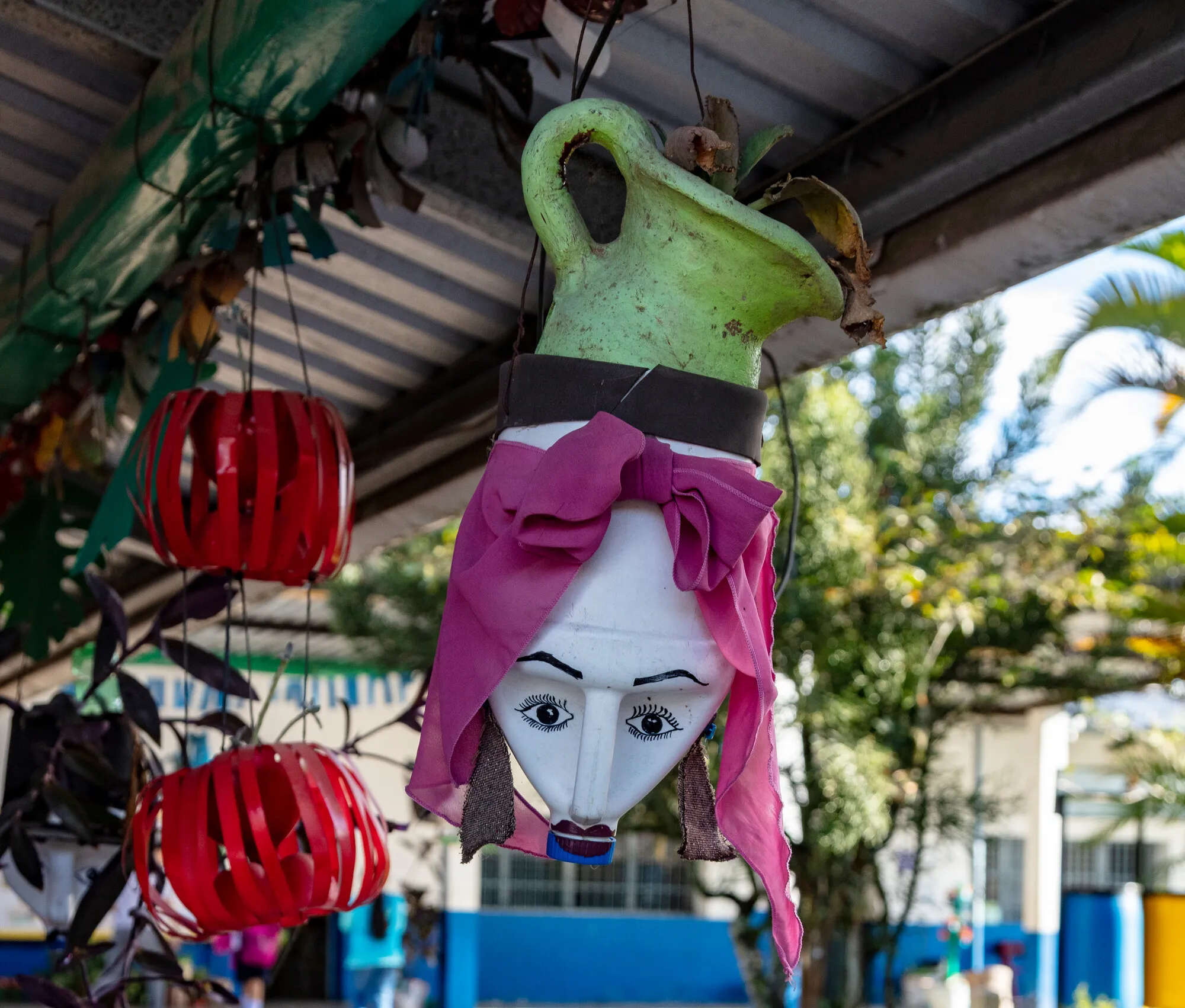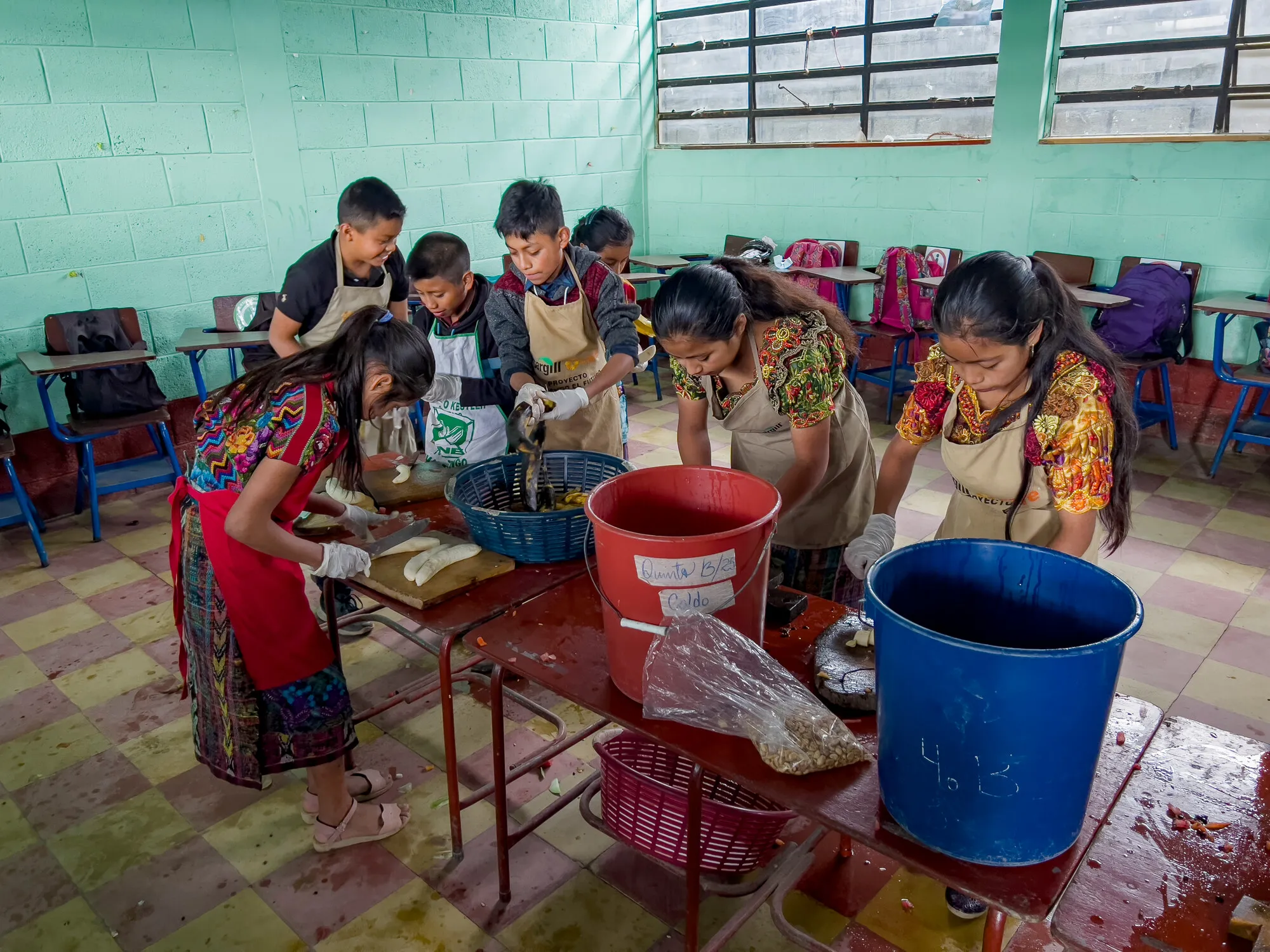They’ve been cultivating these plants in a school container garden throughout the year, and today they’ll get to take them home to their families. These plants will soon become food, as the garden’s products, scattered throughout the community, are incorporated into meals. The nutrients these iron-rich plants provide are important in a country where nearly a quarter of the population experiences food insecurity and nutritional gaps.
“Despite this being an agricultural community, we offer new skills to the parents and the children,” says Baudilio Tubin, a fifth-grade teacher at Escuela Oficial Rural Mixta Aldea Simajhuleu (aka “Official Rural Mixed School of Simajhuleu Village.”) “We teach them that they can produce the foods they are going to consume in small areas, not in large areas as is normal.”

